This is the first phase of a £500-million ‘Maritime Electronics Warfare Programme’ to improve electronic warfare capabilities on Type 45, 26 and 31 warships, as well as the Queen Elizabeth class aircraft carriers.
The Ministry of Defence say that the new technology will allow more simultaneous detection and identification of radio signals over a greater frequency range than current capabilities. This will aid faster operational decision-making, enhanced situational awareness and anti-ship missile defence capability.
Defence Secretary of State Ben Wallace said:
“In a world of rapidly evolving threats, these enhancements will upgrade the Royal Navy with pioneering radar detection capabilities maintaining the UK’s operational advantage at sea. The £100-million investment with key industry partners will underpin vital defence outputs whilst supporting jobs and investment in the South-West of England.”
Senior Responsible Owner for the programme, Royal Navy Commodore Steve Prest, said:
“The ability to understand and exploit the increasingly complex electro-magnetic environment is critical for the operational success of the Royal Navy. This technology will deliver a generational leap in our electronic warfare capabilities to ensure we maintain the operational advantage we need well into the 21st century.”
Rear Admiral Jim Higham, DE&S Director Ship Support, said:
“I am delighted to have achieved contract award and look forward to working with Babcock, Elbit and QinetiQ. Now the real work begins – delivering this crucial capability to the frontline to time and cost and supporting the men and women of the Royal Navy in what they deliver for our nation.”
EUnder the programme, Elbit Systems UK will design, manufacture and deliver maritime EW suites comprised of fully digital full-spectrum Radar Electronic Support Measures (RESM) and EW Command and Control (EWC2) systems. The firm advise that “these latest generation technologies will enhance the situational awareness and anti-ship missile defence of front-line platforms and improve their capability to exploit the electromagnetic environment”.
Martin Fausset, CEO of Elbit Systems UK said:
“It is clearly the case that both conventional and asymmetric threats are increasingly present in the maritime operating environment and the pace of change in technology means our adversaries will continue to exploit it. As such, it is operationally vital that the Royal Navy has the latest capabilities that can evolve in line with and, ahead of, existing technologies. Elbit Systems UK is proud to be working with the Royal Navy as we prepare to confront and overcome the threats of today and tomorrow by providing world-leading solutions.”


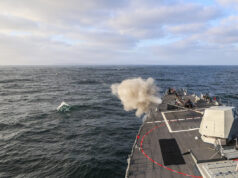
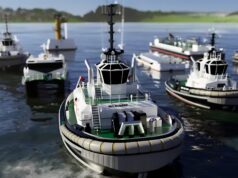

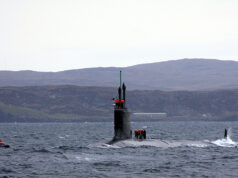
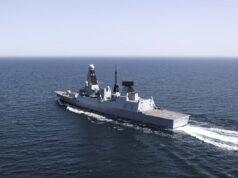

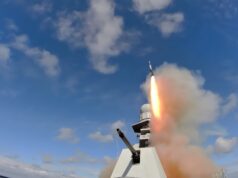
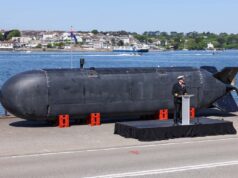
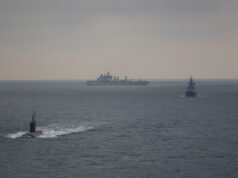
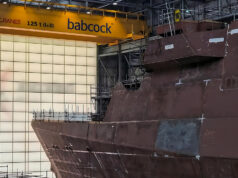

Are these technologies that were conceived of and developed in the UK or imported from Israel and manufactured in the UK ? Either way, i’m hugely impressed by what Israel’s defence sector produces and it is saving British lives.
Necessity is the mother of invention and when you’re surrounded by enemies, as Israel is, they haven’t got much choice.
Fair play to them, some of their kit is top notch.
I don’t think Elbit has a R&D office in UK, but i might be wrong.
There have been many long term collaborations between UK and Israel.
Elbit is really good a fusing mid level sensors to produce excellent overall platforms.
In the UK we tend to go too bleeding edge on the sensors.
Too bleeding edge? It’s one of the areas the UK still leads in, I’d certainly hope they go all out when they decide procure a new one every decade or so.
I think this is a replacement for the Thales systems in Type 45.
So maybe they closed their R&D EW office in UK and transferred to France , or RN found the Israeli system much better.
Reading the text again this might not be a replacement but an additional system to cover more frequency bands
Thales UK certainly haven’t closed up their EW departments. And the Thales ‘Vigile’ kit currently on the Type 45s and 23s wasn’t actually developed by Thales, it was developed by dstl who then sold the patents to Thales to develop as an export (Vigile D, DPX, 2 etc.).
Dstl will also be involved in the new contract and so I’d wager they use a new British-antenna with some of Elbit’s command and control interfaces to link them all together.
I am aware of deep collaborations between Germany and Israel, but not with UK.
They do have a London office which is regularly targeted by BDS activists.
Are these technologies that were conceived of and developed in Israel. Here… https://commons.wikimedia.org/wiki/File:Rehovot_Science_Park.jpg https://www.calcalist.co.il/markets/articles/0,7340,L-3728495,00.html https://www.globes.co.il/news/article.aspx?did=1001300598 .
That page renders in Hebrew, I cannot read it.
Sorry, error …
It’s just real estate transactions involving Elbit. If you ever need to translate a web page, go to Google translate, put the url in the left box and select the language. The link that appears in the right box will open a translation of the page in English.
A shame with the British legacy in all previous and current Outfit systems. I wonder why Thales wasn’t selected, that’s where all of the ex-British supplierserged to and who handles the current UAT Mod 2 system.
Suppliers merged to*
“We have detected an enemy ship sir”
“Leave it alone we have no missiles to fire at it”
Was going say something about this point but you seem to have done it for me mate.😀
“Shoot the cybers at it!”
Prepare cannonballs……
Don’t worry. We’re going to have a conversation about lethality. That should do the trick.
Exactly Jon A few Harsh words should do the trick .And we’ll live too Shout another day
I know your answer was (half) tongue-in-cheek, but Electronic Warfare and other countermeasures are a major part of ship defences when dealing with incoming threats. It’s not as cool as a kinetic solution, but the real-world engagements that we see are showing just how impressive EW is.
There aren’t loads of details, but the AShM attacks on the USN Burkes a year or two back off the coast of Yemen implied that a solid percentage of them weren’t taken down by the missiles or CIWS at all, but by the “soft” countermeasures. Previous to that, CIWS systems have failed for whatever reason and AShMs have been diverted by countermeasures at the last minute. I appreciate though, that you’ll likely be thinking that these are for older types of AShM. True, but realistically speaking they’re the ones we’re most likely to actually have launched at us. The odds are much higher that we’ll be facing a Russian or Iranian proxy force willing to launch missiles at our ships than that we’ll actually be going toe to toe with a Russian or Chinese vessel armed with the latest and greatest they have.
Also, not strictly ship related, but take a look at the effectiveness of the Bayraktar drones across Syria, Libya and particularly Nagorno Kharabakh (spelling?). The drones did take casualties, but there are many documented cases of them operating within relatively sophisticated AAD envelopes without being shot down- which is attributed to their sophisticated EW suites by most analysts I’ve read. Again, there’ll be the argument that they’re export versions of the S300, Pantsir, etc. But they’re also pretty up to date and, again, far more representative of what we can expect to be facing. Aside from that, we only have the Russians’ and Chinese’ word for it that their newest seekers are significantly better than what they’re selling elsewhere.
All said, we should always be at the cutting edge of EW, because it makes a big difference to vessel survivability.
While you make good points I must stress that the primary role of an escort ship is to defend against adversaries and engage enemy ships.
allowing them to sail without an anti ship missile is the equivalent of sending a soldier out without a rifle
Sorry, I mis-read your post; I read the article as about dealing with incoming threats, hence the talk of countermeasures etc. You were clearly seeing the sensor systems in the article from the persepctive of identifying an enemy but not being able to prosecute it due to lack of weaponry.
I agree, an AShM should be something we have- even if it’s a secondary capability to our air defence missiles.
You can find bigger things to complain about the EW, still.
In 1973 Israel defeated waves of anti-ship missiles with Electronic Warfare equipment. Clearly the missiles were much more useful there.
You have to be careful with Israel. A few years ago they supplied the Army and RAF with certain bit of kit for our helicopters, that used on board systems to provide it with navigational data, which was then displayed on either a helmet mounted display or an attached display that fitted to NVGs. However, this item also recorded the data. So when it went U/S it had to go back to Israel for repair. Israel then knew where and when RAF and AAC helicopters were operating. This wasn’t discovered until a few years after it came into service.
The MoD found out and immediately cancelled the contract. However, The Israeli firm then set up an independent UK repair centre, so the items didn’t go back to Israel. So the contract was re-established.
Christmas story. F-35- helmet also recorded the data for Elbit Systems of America. (Elbit Systems and Rockwell Collins…) You have to be careful- “They” are everywhere … (smiley)
Sounds like the F35 !
Excellent investment for a crucial capability improvement. It might not be as sexy as some other fancy sounding weapon systems, but it’s critical for warship survivability.
Extended range gear in action…
Ops room T31 somewhere in the Pacific.
“Sir, incoming warning”
“Yes, what is it?”
“As we are future proofed and so do no not carry weapons, it says, run away, fast.”
Not going to be able to outrun a hypersonic missile. Need hard or soft kill or effective decoys otherwise your likely dead.
See the former 1st Sea Lord wish away weapons to future proof ships.
(@gunbuster would have done better at the atmosphere of the ops room).
I wonder if Gollies in the EWO will now have the capabilites, too listen to or download Crews Mobile Phone and txt with this investment Just a thought ? David
Or listen to the sundodgers sh!t packing each other…
Especially if its HMS Vigal
CTs have been doing it for years …
Mobile phone jammers are also available if needed… Especially for force protection if a remote detonator on a mobile phone is suspected…
Yes, just waiting for someone too cry that their so called human rights are being violated ? Gunbuster
Just read BBC news grandpa Biden is tighten restrictions on Huawei and ZTE hope Naafi don’t sell any of these products what could be embedded in sailors mobiles and who’s benefitting ?
“Air-launched Missiles on the way!”
“Can we intercept them using our jammers?”
“No. David Barry on UK Defence Journal said anti-ship missiles are more than Electronic Warfare so we decided not to invest in the right defensive equipment.”
If you’re going to quote at least tie the strands together from the news in the last few days.
Show again.
Why does this have to concern other news? Priorities don’t have to overlap.
Just because you want anti-ship missiles on surface vessels doesn’t mean we suddenly don’t need ECM suites and other EW equipment.
Does this mean that these ships will get a Cooperative Engagement capability at last?
From the text it appears it is not related. This is for signal intelligence. to analyse the radio/radar signals that arrive to antennas on ship.
From the text this increase the frequency bands analysed, so the existing systems might even remain in place.
It mentioned command and control, so I thought that might be code for cooperative engagement 🙂
I was hoping for the same thing, including data links for fleet helicopters and other wondrous things. I think we may be expecting too much from £100M though, or at least £100M in the MOD’s hands…
Yes, most definitely. The majority of ESM currently used cannot detect very high frequency radar operating in the Ka, V and W bands. A number of missile systems are now using active radars in these bands (eg Brimstone/Spear-3). Therefore, it is highly likely that countries perceived to be a threat to the UK, will also be developing missiles that have radars operating ion these bands. A number of very high bandwidth data-links are also using the Ka band, so if the ESM is sensitive enough it might be able to detect that as well.
If I remember correctly the bog standard EW set goes up to around 18gigs.
Anything above that and various add on black boxes are needed. RN EW sets have lots of add ons and black boxes to cover additional frequency ranges and also things like laser illuminators.
The new EW contracts now and upcoming are going to tie together all Of these individual systems under one maintainance and supplier authority and also include soft kill decoys and active jammers in the later years.
Modern “soft kill decoys and active jammers”. SA`AR-6 corvette. Оnly from a distance, increase in… https://waronline.org/fora/index.php?attachments/spike2-2-_cmpk-jpg.165465/ http://forumupload.ru/uploads/000a/e3/16/2637/t51885.jpg Regards.
I have to be careful what I say, as EW is a touchy subject.
I do have a thought that current passive/active decoys may need to be upgraded, so that they can be thrown much further from the ship. Perhaps BAe could do a development on similar lines to their Kingfisher sonarbuoy delivery system? This would either launch a chaff delivery system, a active RF jammer (DRFM based jammer – based on Britecloud) or a active IR jammer. Perhaps, these expendable decoys/jammers could be kept aloft with a parachute, balloon or some form of floatation? But fired so that it lands closer to the horizon in front of the incoming threat. When fired upwards, it could be used to decoy incoming ballistic or high diving threats.
Hmm, hello is that DSTl?
It’s good to see they will be getting at least some cutting edge capability to go on the offensive, albeit in a non kinetic way. Most of the surface fleet seems to have dumped everything into state of the art defensive systems but little in the way of offensive capabilities other than a 4.5 inch gun and an outdated anti ship missile against ships armed with hypersonic missiles. A bit like having the world’s best body armour and but being armed with a snub nosed revolver and then being expected to take out a sniper wielding a .50 cal.
Wow! RN moving away from UK based Thales as standard RESM supplier and moving over to dependence on Israeli technology? Wow! I’m not decrying in any way Israeli technology, but I’m just surprised by the move
The newest! https://www.jpost.com/israel-news/iai-unveils-new-defensive-electronic-warfare-systems-684703
The Scorpius family of systems. Elista (EW for UK NAVY)- 70% of the shares are held Elbit Systems and 30% – IAI. Successful cooperation!
Consequences of monocultural journalist-political discourse in Western world where the defence is shunned.
The issue is not only related to military issues.Most journalists have a background of only humanities or worse. So there is no one or almost no one writting with knowledge about logistics, engineering, energy, biotech, medical, etc.